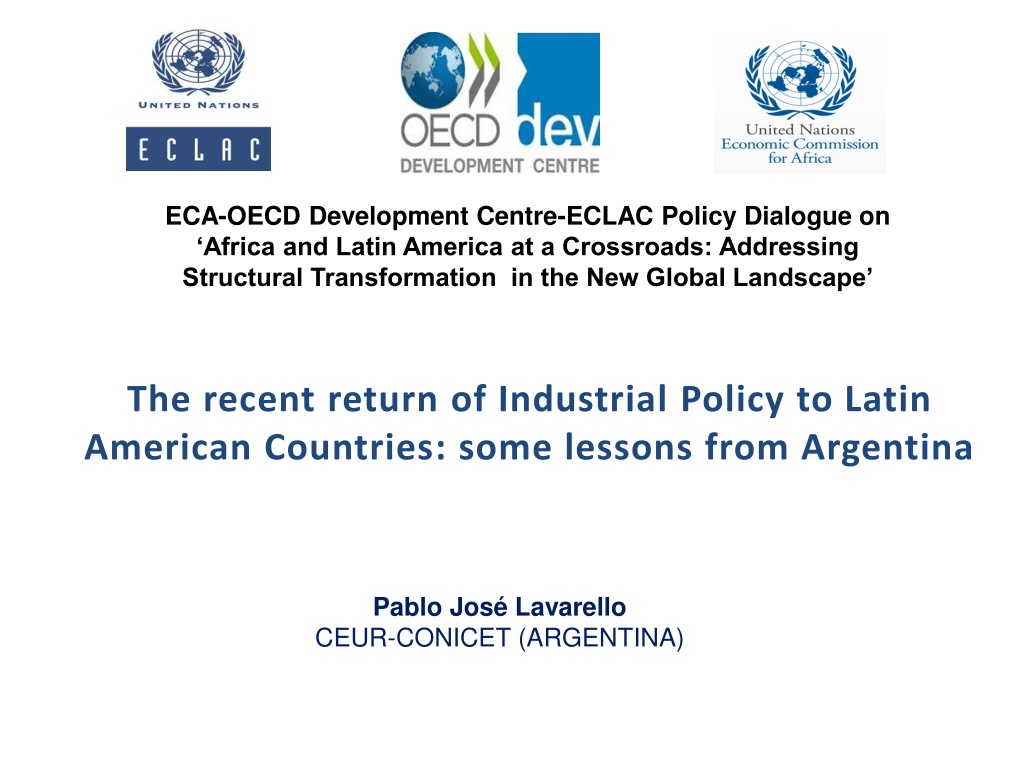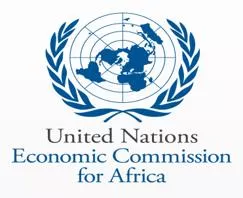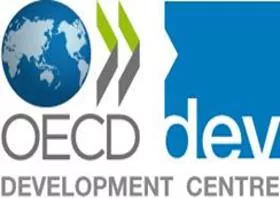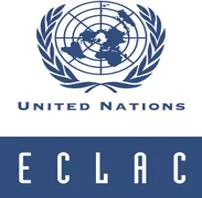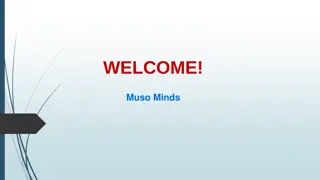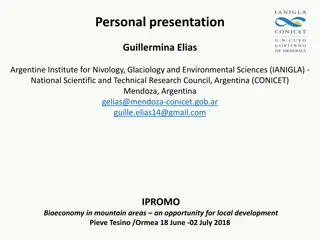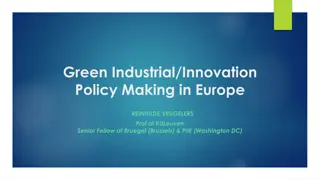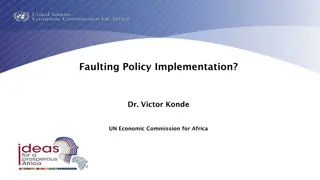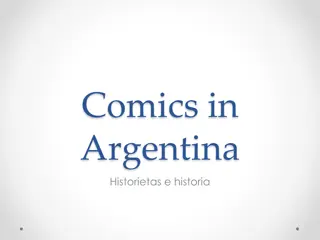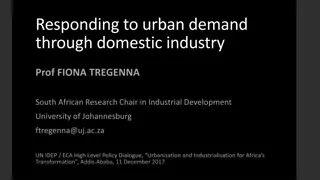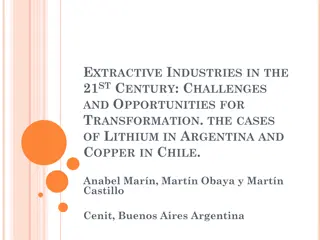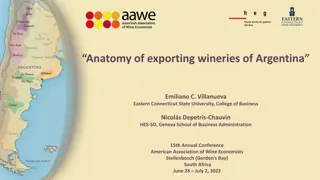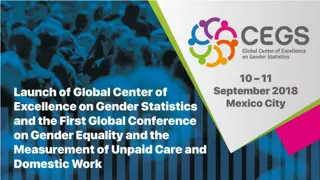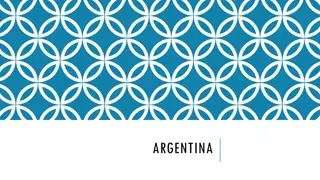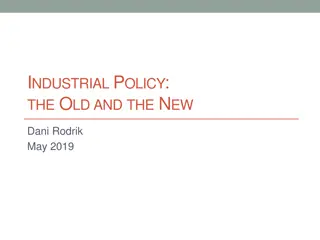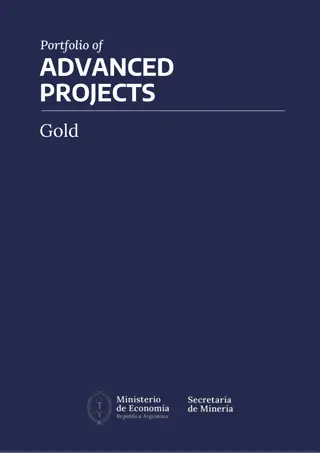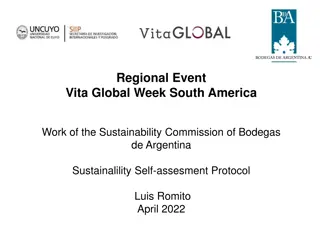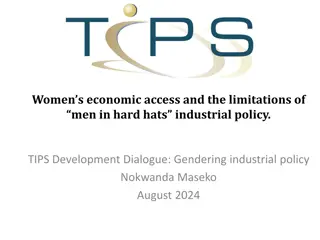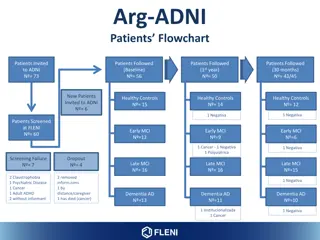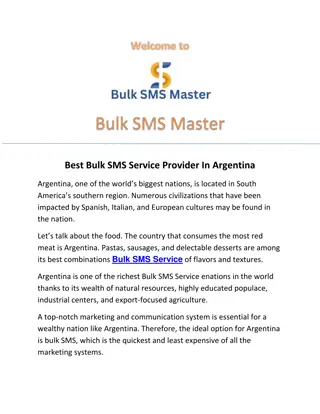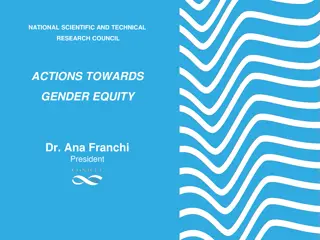Lessons from Argentina's Recent Industrial Policy
This content delves into Argentina's structural transformation and industrial policy, examining key trends, challenges, and trade dynamics. It offers insights into the country's manufacturing sector evolution and external constraints, highlighting sectoral productivity differences.
Download Presentation

Please find below an Image/Link to download the presentation.
The content on the website is provided AS IS for your information and personal use only. It may not be sold, licensed, or shared on other websites without obtaining consent from the author.If you encounter any issues during the download, it is possible that the publisher has removed the file from their server.
You are allowed to download the files provided on this website for personal or commercial use, subject to the condition that they are used lawfully. All files are the property of their respective owners.
The content on the website is provided AS IS for your information and personal use only. It may not be sold, licensed, or shared on other websites without obtaining consent from the author.
E N D
Presentation Transcript
ECA-OECD Development Centre-ECLAC Policy Dialogue on Africa and Latin America at a Crossroads: Addressing Structural Transformation in the New Global Landscape The recent return of Industrial Policy to Latin American Countries: some lessons from Argentina Pablo Jos Lavarello CEUR-CONICET (ARGENTINA)
Index Stylized Facts: structural Change in Argentina during the 2000s? II. Industrial Policy: some general traits III. Design and Implementation issues IV. Conclusions and policy lessons I.
I. Structural Change in Argentina during the 2000s?
Latin America Countries early de-industrialization % Manufacturing Value Added / Total Value Added. Constant Prices 2005 30 25 20 15 10 5 0 1970 1972 1974 1976 1978 1980 1982 1984 1986 1988 1990 1992 1994 1996 1998 2000 2002 2004 2006 2008 2010 2012 Argentina Brasil Chile Colombia Mexico Uruguay Source: UNCTAD.
Structural Change in Argentine Manufacture. 1970-2013 Employment share by Argentine tipology 100% 19,3 15,8 14,4 16,2 90% 6,24 5,59 6,69 80% 6,07 6,9 7,4 7,1 8,0 70% 60% 25,7 24,9 29,3 32,1 50% 40% 30% 46,8 45,1 41,9 20% 34,5 10% 0% 1973-1982 1983-1992 1993-2002 2003-2013 Natural Resource Intensive Labor Intensive Automotive sectors Chemical-Pharmaceutical Engineering-intensive Source: Based on PADI-CEPAL
Argentina Manufacture Trade Balance : the external constraint Millions USS Dollars 25000 20000 15000 10000 5000 0 -5000 -10000 -15000 -20000 -25000 19701972197419761978198019821984198619881990199219941996199820002002200420062008201020122014 Natural Resource Intensive Labor Intensive Atomotive activities Ingeneering-Intensive Source: Based on UN-COMTRADE
Broadening Technology Gap in Argentine: sectoral diferencies Argentina s Labor productivity as a percentage of US Labor productivity (US= 100) 70.0 Chemical-Pharmaceutical Engineering-intensive Automotive sectors Natural Resource Intensive Labor Intensive 60.0 50.0 40.0 30.0 20.0 10.0 0.0 1970197219741976197819801982198419861988199019921994199619982000200220042006200820102012 Source: Based on PADI-CEPAL
Frontier productivity growth: US Labor Productivity 1970=100 700 Engineering-intensive Automotive sectors 600 Natural Resource Intensive Labor Intensive Chimie-Pharmacie 500 400 300 200 100 0 1970 1971 1972 1973 1974 1975 1976 1977 1978 1979 1980 1981 1982 1983 1984 1985 1986 1987 1988 1989 1990 1991 1992 1993 1994 1995 1996 1997 1998 1999 2000 2001 2002 2003 2004 2005 2006 2007 2008 2009 2010 2011 2012 2013 Source: Based on PADI-CEPAL
II. On the recent return of Industrial Policy in Argentine: some stylized facts
Industrial Policy: budgetary and financial effort 2010-2013 Average 10 % Manufacturing Value Added 1,4% GDP 2004-2006 Average 5 % Manufacturing Value Added 0,87% GDP
Economic Signals matter: differential export taxes in Argentina 25% 20% 15% 10% 5% 0% 2002 2003 2004 2005 2006 2007 2008 2009 2010 2011 2012 2013 Industrial Manufacture Agriculture Agriculture Processing Source: ECLAC Buenos Aires on Argentine Economic Ministery Statistics
Industrial Policy Support by intervention domain (As % of manufacturing Value Added, Average for each period) Opportunities S&T Broad Labor Training S&T Capabilities support Old Industrial Promotion Bank Financing Public Procurement 0.0 1.0 2.0 3.0 4.0 5.0 2004-06 2007-09 2010-13 Source: ECLAC (Buenos Aires) based on Argentine Ministry of Economic and Infrastructure Planing, Argentina Central Bank, Ministry of Science Technology and Innovation
Industrial Policy: intervention pattern evolution Domains of Policy Intervention Opportunities of S&T innovation Broader education and training Policies Firm's Innovation Capabilities Support Policies Economic Signals (exchange rates, tariffs, IPR ) Firm's Productive Capabilities Support Policies Selection Mechanisms (anti-trust, Trade Adminitration, Public Procurement...) Intervention Levels (a) Macroeconomic Framework "Husbandry intervention" "State as Regulator" (b) Horizontal actions 90: Ant Trust, Liiberalization, Privatization and deregulation Horizontal S&T Firm s capability support Competitive Exchange rate + export taxes to agribusiness (c) Regional actions Old Regional Promotion Selective Technology Policy (Bio, TICs, Nano) (d) Sector/Technology Focused "Midwife intervention" (Infant S&T Capabilities Promotion) (e) Problem Oriented (by Societal need/ Mission) Problem Oriented Big Industrial and S&T Programs (Nuclear, satellital, Energy)
Industrial Strategic Plan 2020 General Objective: assure sustainability of inclusive demand led growth (7% anual manufacture production growth needed to 5% GDP growth). Participative method : sectoral goals defined by public-private interaction Objective Conception and Design 11 value chain pre-selected: horizontal perspective (non strategic sector) 11 forums (one for each value chain ) 11 implementation tables (only one meeting each year) Husbandry State : Market Faillure (information asimetry between policy supply and demand) Objective mutation: import substitution rationale has become prioritary Implementation Weak consistency between objectives and instruments Weak inter-ministry coordination. Exception in sectors with previous public-private institutional learning (Health Biotechnology, software and Agricultural Machinery)
CyT Plan Innovative Argentine 2020 General Objective : promote innovation based on S&T opportinities Specific Objectives: Strenghten S&T Opportinities and focusing innovative capabilities Objective Conception and Design 35 Socio-Productive Cores : sectoral/technology/region Focused 1. Participtaive Design tables (private sector associations, universities and other Ministries) 2. Consulting and validating instance Agroindustry - Biotech Seeds - Biorefineries - Agricultural Machinery Soustainable developpment 35 Implementation tables (only 22 between 2012 and 2013) Institutional Learning: from horizontal (ex post selectivity) actions to ex ante selectivity Science Based sectors absorbing most of the ressources (Heath Biotech and Agrobiotech) Weak support to Capital Goods and Big Projects (nuclear, aeroespatial) Manufacturing - Autopartts - Medical equipment - Electronic Components Energy - Rational use - Fracking HEALTH Implementation Biosimilars Infectious diseases Some consistency objectives and instruments ( Sectoral Funds represent less than 20% of Ministry Support) Weak interministry coordination (exception: agriculture ministry)
Conclusions: Lessons from Argentina Industrial Policy has been successful in limiting de-industrialization and it have enabled certain recovering of engineering intensive activities in the context of natural commodity price super-cycle. Several actions explained this performance: Competitive exchange rate cum export taxes favoring manufacture relatively to agribusiness Selection context (trade Administration , strategic IPR approach, public procurement) But it has not been enough in the context of technological acceleration: technology gap broadened in all sectors, but specifically in engineering intensive activities. Challenges : From horizontal Husbandry Approach to infant capability approach in new sectors Increase coordination between S&T policy and Industrial Policy Go beyond horizontal/selective instruments: Problem Focused Projects structuring different S&T and Industrial policy domains
